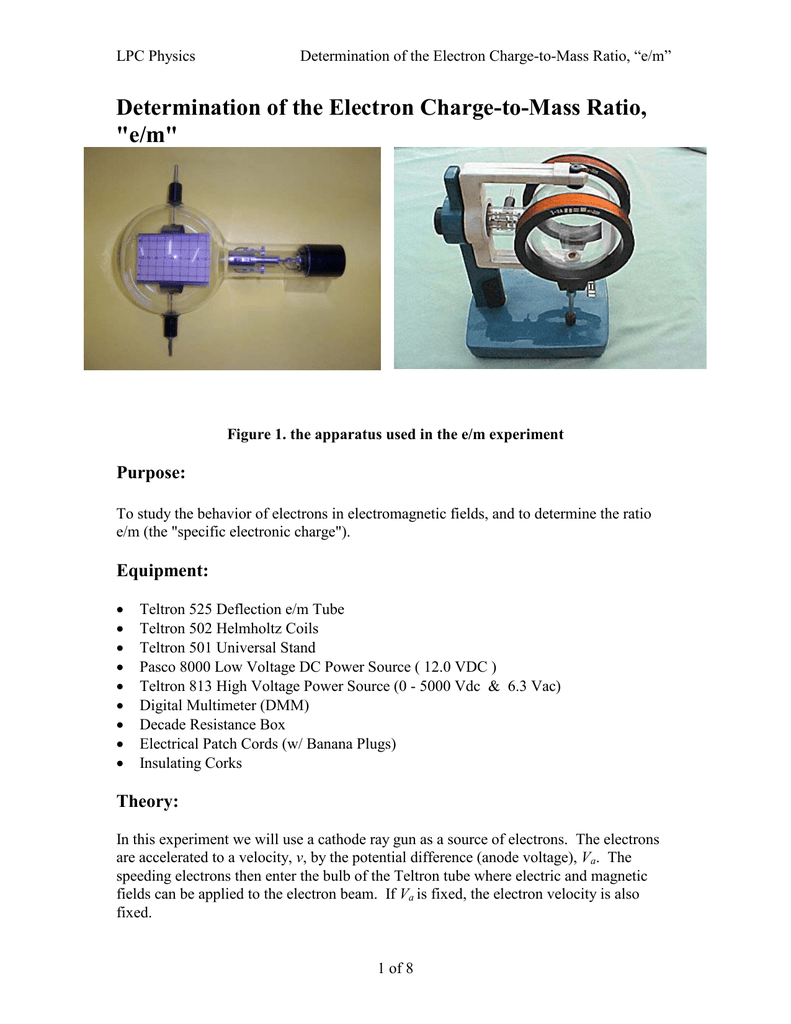

The value as of 1991 (for the charge on the electron) is 1.60217733 (49) x 10¯ 19 coulombs. Every time the drop gained or lost charge, it ALWAYS did so in a whole number multiple of the same charge. In following the oil drop over many ascents and descents, he could measure the drop as it lost or gained electrons, sometimes only one at a time. Millikan could study one drop at a time, rather than a whole cloud.ģ. Oil evaporated much slower than water, so the drops stayed essentially constant in mass.Ģ. Since the rate of ascent (or descent) was critical, he has a highly accurate scale inscribed onto the telescope used for droplet observation and he used a highly accurate clock, "which read to 0.002 second."ġ. He could also make the drop move up and down many times.ġ1. By adjusting the current, he could freeze the drop in place and hold it there for hours. What he saw was a shining point of light.ġ0. He exposed the droplet to radiation while it was falling, which stripped electrons off.ĩ. It took a drop with no charge about 30 seconds to fall across the opening between the plates.Ĩ. The plates were charged with 5,000 volts.ħ. One drop of oil would make it through the hole.Ħ. He sprayed oil ("the highest grade of clock oil") with an atomizer that made drops one ten-thousandth of an inch in diameter.ĥ. The space between the plates was illuminated with a powerful beam of light.Ĥ. The hole bored in the top plate was very small.ģ. The two plates were 16 mm across, "correct to about. These are some points to be made about the experiment:ġ. This is a photo dating from the time of the experiment. Through the third of these windows, set at an angle of about 18° from the line Xpa and in the same horizontal plane, the oil drop is observed.
Standard charge of electron windows#
To the three windows g (two only are shown) in the brass vessel D correspond, of course, three windows in the ebonite strip c which encircles the condenser plates M and N. The air about the drop p was ionized when desired by means of Röntgen rays from X which readily passed through the glass window g. The atomizer A was blown by means of a puff of carefully dried and dust-free air introduced through the cock e. A long search for causes of slight irregularity revealed nothing so important as this and after the bath was installed all of the irregularities vanished. This constant temperature bath was found essential if such consistency of measurement as is shown below was to be obtained. long, and a cupric chloride cell d, and second by immersing the whole vessel D in a constant temperature bath G of gas-engine oil (40 liters) which permitted, in general, fluctuations of not more than. Complete stagnancy of the air between the condenser plates M and N was attained first by absorbing all of the heat rays from the arc A by means of a water cell w, 80 cm. down these were measured with a very carefully made mercury manometer M which at atmospheric pressure gave precisely the same reading as a standard barometer. The brass vessel D was built for work at all pressures up to 15 atmospheres but since the present observations have to do only with pressures from 76 cm. The experimental arrangements are shown in Fig. Here is a diagram of his apparatus, reproduced from his 1913 article: His 1913 article announcing the determination of the electron's charge is a classic and Millikan received the Nobel Prize for his efforts. Millikan started his work on electron charge in 1906 and continued for seven years. This work continued until about 1901 or 1902. Thomson, Townsend, and Wilson each obtained roughly the same value for the charge on positive and negative ions.

He determined the e/m ratio of the droplets (2 divided by 4), then multiplied by the mass of one droplet to get the value for e. the total mass of all water droplets (found by measuring the acid's increase in weight) the total electric charge carried on all the droplets (this was done by absorbing the water into an acid and measuring the charge picked up.)Ĥ. the mass of a water droplet (actually the average mass of many)Ģ. Several items were measured in this experiment.ġ. Under the influence of gravity, the drop would fall, accelerating until it hit a constant speed. Townsend's work depended on the fact that drops of water will grow around ions in humid air. Townsend's work will be described as an example. The charge on electron was first measured by J.J. Determination of the Charge on an Electron Determination of the Charge on an Electron


 0 kommentar(er)
0 kommentar(er)
